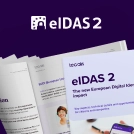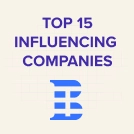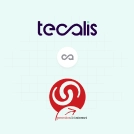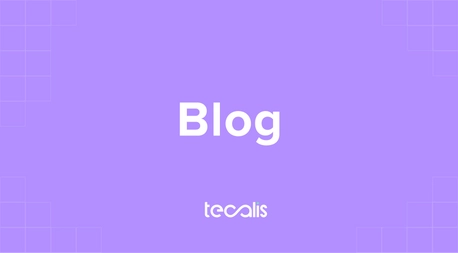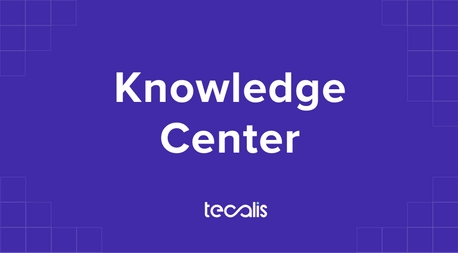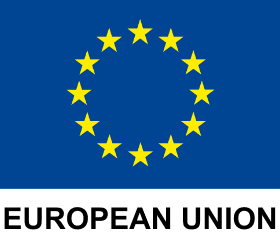Index
Get the latest news right in your inbox
The rise of cryptocurrencies has revolutionized the global financial landscape, offering unprecedented opportunities for investors and businesses. However, this exponential growth has also attracted malicious actors seeking to exploit vulnerabilities in the crypto ecosystem.
Cryptocurrency fraud has become a significant concern, affecting both individuals and institutions. In this article, we will explore the various types of fraud in the crypto sector, the crucial role of KYC (Know Your Customer) procedures to mitigate them and the impact of the MiCA Regulation in preventing fraudulent activities in the cryptoasset market.
Crypto industry fraud
The cryptocurrency sector, characterized by its decentralized nature and initial lack of strict regulations, has been fertile ground for various forms of fraud. The lack of traditional intermediaries and the pseudonymity of transactions have allowed fraudsters to operate with relative ease, taking advantage of unsuspecting investors and the technical complexity inherent in the crypto ecosystem.
According to data from the U.S. Federal Trade Commission (FTC), cryptocurrency payments are generally irreversible, meaning that once a transaction is made, it is difficult to recover the funds without the cooperation of the recipient.
In addition, the rapid evolution of the market and the constant emergence of new projects and tokens have created an environment where scams can proliferate before regulatory authorities can effectively intervene, although this is changing thanks to new regulations such as the MiCA Regulation and RegTech solutions for the crypto industry.
Types of cryptocurrency fraud
Cryptocurrency fraud manifests itself in various forms, each with specific characteristics and methods. Some of the most common types are detailed below:
- Investment scams: These scams involve the promotion of fraudulent investment opportunities that promise high returns with little or no risk. Scammers often use aggressive marketing tactics to lure unwary investors.
- Phishing: Phishing involves tricking victims into revealing sensitive information, such as private keys or access credentials, through fake websites or emails that mimic legitimate entities.
- Ransomware: Ransomware is a type of malware that encrypts the victim's files and demands a cryptocurrency payment to restore access. This method has gained notoriety due to the difficulty of tracking cryptocurrency payments.
- Identity Theft: Fraudsters can use stolen or fake identities to create accounts on cryptocurrency exchanges, facilitating illicit activities such as money laundering.
- Pump and Dump: In this scheme, fraudsters artificially inflate the price of a low-cap cryptocurrency through misleading or false information, then sell their holdings at a high price, leaving new investors with significant losses.
- Cryptojacking: Cryptojacking involves the unauthorized use of a person's hardware to mine cryptocurrencies. This is accomplished by installing malware that uses the victim's system resources without their knowledge.
- Bitcoin ATM fraud: Some fraudsters manipulate Bitcoin ATMs to divert funds or install devices that capture sensitive user information. With the implementation of MiCA, a unification of KYC/AML procedures on these devices is expected to prevent such frauds.
The role of crypto-exchanges and trading platforms in preventing fraud
Cryptocurrency exchanges play a critical role in preventing fraud within the crypto ecosystem. As the main entry and exit points for investors, they have a responsibility to implement robust security measures and verification procedures to protect their users and themselves to maintain market integrity.
Implementation of KYC and AML procedures
The adoption of KYC (Know Your Customer) and AML (Anti-Money Laundering) procedures is essential to identify and verify the identity of users, preventing illicit activities such as money laundering and terrorist financing. These procedures require users to provide personal information and identification documents, which helps create a more secure and transparent environment.
Monitoring of suspicious transactions
Exchanges should implement advanced monitoring systems and anti-fraud controls to detect unusual or suspicious transaction patterns that may indicate suspicious activity. The use of technologies such as artificial intelligence and machine learning can improve the ability to quickly identify and respond to potential threats.
Collaboration with regulatory authorities
Cooperation with government agencies and regulators is crucial to ensure compliance with existing regulations and contribute to the creation of a sound legal framework that protects investors and promotes confidence in the market.

Tools to avoid crypto fraud: KYC, AML, RegTech and more.
The fight against fraud in the cryptocurrency sector depends on the implementation of RegTech tools and advanced technologies. These tools not only help identify and mitigate fraudulent activities, but also strengthen investor confidence and ensure regulatory compliance. The following is a description of the main solutions used in the crypto ecosystem:
Know Your Customer (KYC) and KYB ID Verification
The KYC procedure is a fundamental measure to prevent fraud. It consists of verifying the identity of users through the collection of personal data and official documents as well as verifying that you are who you say you are behind the screen,. Some key benefits of KYC include:
- Fraud reduction: Identifies users before allowing financial transactions.
- Transparency: Facilitates traceability of transactions on exchange platforms.
Regulatory compliance: Helps companies comply with anti-money laundering laws
Anti-Money Laundering (AML)
AML refers to a set of policies, laws and regulations designed to detect and prevent money laundering and other illicit activities. It includes:
- Continuous monitoring of transactions: Identification of suspicious patterns.
- Unusual activity reports: Reports to authorities on atypical behavior.
- Staff training: Training of employees to recognize possible signs of money laundering.
RegTech Technologies
Regulatory technology (RegTech) is a key innovation in regulatory compliance. It uses artificial intelligence, machine learning and data analytics to automate and optimize compliance processes. Examples of RegTech tools include:
- Predictive analytics: Identifies potential risks before they become problems.
- Automation of digital onboarding and new user registration: Reduces time and costs associated with manual verification.
- Audit platforms: Facilitate regulatory inspections and ensure transparency.
Multifactor authentication (MFA)
Multifactor authentication based on SCA and eIDAS standards adds an additional layer of security by requiring multiple identity verifications. This makes it difficult for attackers to access user accounts or funds, even if they obtain your credentials.
MiCA Regulation: Obligations to prevent crypto market fraud
The MiCA (Markets in Crypto Assets) Regulation represents a comprehensive regulatory framework that seeks to regulate the cryptoassets market in the European Union. This regulation specifically addresses fraud threats and establishes clear obligations for crypto ecosystem players.
MiCA's main objectives
- Consumer protection: Ensuring investor security and transparency in transactions.
- Financial stability: Reduce the risk of negative impacts on traditional markets due to downturns in the crypto market.
- Fostering innovation: Create a regulated environment that allows the development of new technologies and business models.
Key obligations under MiCA
- Mandatory KYC and AML procedures: MiCA requires companies operating in the crypto market to implement mandatory KYC and AML procedures. This includes identity verification of wallet holders and continuous monitoring of transactions to prevent illegal activities.
- Licenses for crypto-companies and trading platforms: Cryptocurrency-related platforms and services must obtain regulatory licenses from an EU member country to operate. These licenses are transferable between countries within the bloc, simplifying business expansion.
- Transparency in token issuance: Issuers of cryptoassets must provide detailed information documents, known as whitepapers, describing the purpose, risks and technical characteristics of the token. This reduces the chances of fraud in ICOs.
- Rules for stablecoins: stablecoins, a type of cryptoasset linked to an underlying asset such as the dollar or euro, are subject to stricter regulations under MiCA. This includes reserve requirements and regular audits to ensure their stability.

Tips to prevent fraud in the cryptocurrency industry
Preventing fraud in the crypto market is a shared responsibility between investors, platforms and regulators. Here are some practical recommendations to minimize risks:
Advice for investors
- Research before investing: Analyze the track record, team and reputation of the project or platform.
- Use secure wallets: Prefer hardware wallets or wallets with advanced security features.
- Enable multi-factor authentication: Protect your accounts with additional security measures.
- Avoid sharing sensitive information: Be cautious with emails or websites that ask for personal data.
- Be wary of offers that are too good to be true: High, guaranteed returns are often signs of fraud.
Tips for platforms
- Implements advanced technologies based on eIDAS and MiCA: Uses RegTech tools to automate regulatory compliance.
- Train staff: Make sure employees can identify signs of fraud.
- Collaborates with authorities: Establishes direct communication channels with regulatory bodies.
- Provides user education: Helps customers understand security best practices.
Conclusion
Cryptocurrency fraud is a significant, but not insurmountable, challenge. The combination of advanced technologies, robust regulations such as the MiCA Regulation, and a proactive approach by investors and platforms can create a safer and more trustworthy environment for all. Mass adoption of cryptocurrencies will only be possible if it is built on a foundation of trust, transparency and security.




